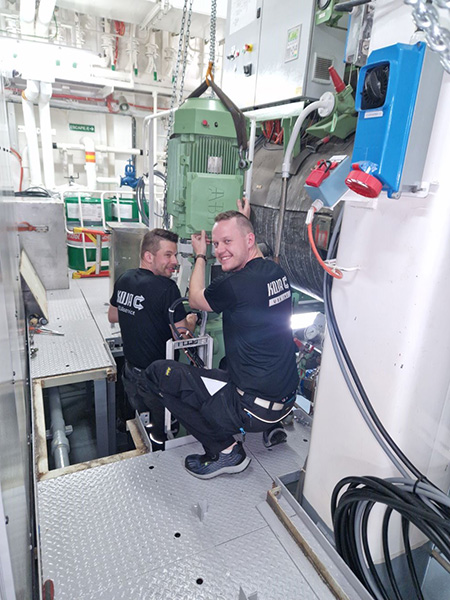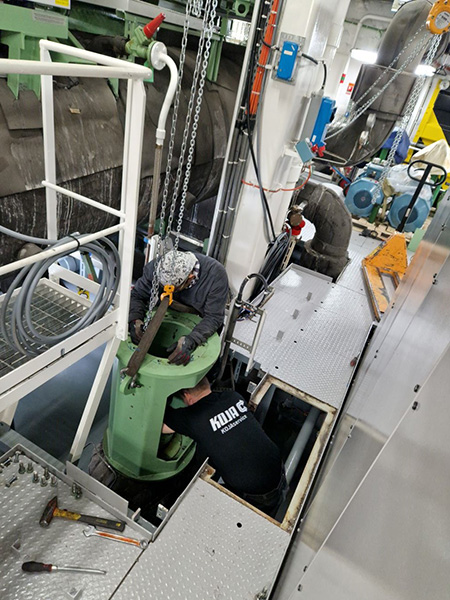Equipment
Systems
Turnkey Deliveries
Koja Marine champions energy-saving HVAC systems onboard – also for retrofit projects

Cruise ship owners have increased interest in HVAC energy investment projects, due to the IMO’s new Carbon Intensity Indicator (CII) and rising fuel prices. As the Carbon Intensity Indicator is a measure of a ship’s energy efficiency, these issues have taken on a brand-new significance.
However, there is one more factor that outweighs all others in the cruise ship owners’ minds:
“The main trigger for the investment decision is the payback period, which is highly influenced by the used fuel type and its price, cruise profile, energy saving potential and the cost of the investment,” says Teemu Tanninen, Director, Koja Marine.
Modern, big cruise ships have extensive HVAC systems in place for patron comfort – but are they always as energy-efficient and low-carbon as possible? Tanninen believes that energy costs can be brought down considerably in most cases.
“Regarding to HVAC system energy consumption in the whole cruise ship scale, the HVAC consumes approximately between 10-15% of the whole fuel consumption, depending on the HVAC technology and cruise profile,” he starts off.
Secure air flow to cabins
Tanninen points out that a working HVAC system can be divided into four sub systems: cabin, public, service and stairs.
“In a cruise ship, the cabin system is the highest energy consumer, taking up about 35% of the total HVAC energy consumption. Thus, Koja is developing energy saving options particularly for the cabin system,” Tanninen explains.
Right now, Koja is putting the finishing touches on a HVAC retrofit concept which brings the energy-efficient ways of 2020’s to much older vessels, too. Based on the company’s theoretical calculations, Koja expects approximately 50% energy savings from the cabin air conditioning system, corresponding approximately to 2 - 2.5% fuel consumption reduction in the whole ship scale – thus, having direct impact on CII.
“We will give out more information, when our project is ready for public,” adds Tanninen.

Optimizing HVAC
Koja’s operating model is rooted on holistic ideology: When the entire lifecycle of a HVAC system has been individually dimensioned and optimized, starting from the design phase, the savings do multiply over time. Since Koja is building sturdy HVAC systems for the waves, structures/components need to be tested under extreme conditions. Koja promises to support and serve at every stage of the system’s lifecycle.
It is not unfair to say that Koja Marine’s smart ventilation solutions are the soul of the ship. The top experts at Koja’s R&D Center design and test each HVAC solution with an eye on high performance and low carbon in realistic operational conditions.
“Koja’s new product, Koja SmartAir® concept is a HVAC automation system, complete with a user-friendly software interface. All energy consumption data is logged into the system and available for statistical use,” explains Tanninen.
“Koja SmartAir also features energy saving time programs that assist the customer in managing the system.”

HVAC with IQ
Tanninen explains that the system is anchored on “demand-based” ideology: there’s no point in focusing air flow to the ship’s stairways at night when everybody’s asleep, but once the ship docks, those stairs become crowded and air scarce. Another example: when people are asleep in their beds, they produce less CO2 – so the HVAC system can ease up a bit.
“Our system brings demand-based air conditioning for all areas: stairs, cabins, service and public spaces.”
Another change is the conversion of constant chilled water flow to demand-based flow system.
“The customary three-way valve system is replaced with a two-way valve system that yields improved energy savings.” Pumps, for example, need less energy when they’re dealing with variable flow instead of constant flow.
Fan coil mode to the E-rescue!
The “secret sauce” in all of this is the fan coil mode for public and stairs air conditioning units. “The system re-circulates indoor air when CO2 levels in served space are below defined levels; when the level is exceeded, a fresh air is provided accordingly,” Tanninen explains the idea behind fan coil mode use.
Koja Marine has a proud tradition of excellence which is built on delivery reliability, quality and efficiency – and this is why the world’s largest cruise lines have come to depend upon Koja as their HVAC partner. The company’s experience of nearly 90 years is something that the customers really appreciate – but Tanninen admits that retrofits still pose challenges even for seasoned hands.
“Every cabin is retrofitted with HVAC individually and this requires lots of skilled labor,” Tanninen says, adding that Koja has built powerful networks to counter the rising demand: no project is too big for the company to handle.
More information:
www.koja.fi/en/koja-usa-inc
www.koja.fi/en/marine
www.koja.fi/en/contact-information/#marine
by: Sami J. Anteroinen



